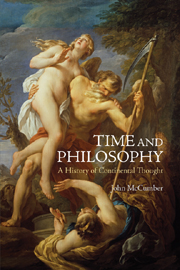Book contents
- Frontmatter
- Contents
- Acknowledgements
- Abbreviations and note on texts
- Introduction
- I Germany, 1790–1890
- II Germany and America, 1900–1968
- 6 The return of traditional philosophy: Edmund Husserl
- 7 The finite future: Martin Heidegger
- 8 Activity and mortality: Hannah Arendt
- 9 The twilight of Enlightenment: Theodor W. Adorno and Max Horkheimer
- III France, 1945–2004
- IV Onwards, 2011–
- Further reading
- Bibliography
- Index
8 - Activity and mortality: Hannah Arendt
from II - Germany and America, 1900–1968
- Frontmatter
- Contents
- Acknowledgements
- Abbreviations and note on texts
- Introduction
- I Germany, 1790–1890
- II Germany and America, 1900–1968
- 6 The return of traditional philosophy: Edmund Husserl
- 7 The finite future: Martin Heidegger
- 8 Activity and mortality: Hannah Arendt
- 9 The twilight of Enlightenment: Theodor W. Adorno and Max Horkheimer
- III France, 1945–2004
- IV Onwards, 2011–
- Further reading
- Bibliography
- Index
Summary
In the summer of 1941, a woman known today only as Mrs Giduz sat down to write a letter. Mrs Giduz, of Winchester, Massachusetts, was a proper person, and she ran a proper household. The Giduzes did not eat meat, and Mr Giduz was not allowed to smoke in the house, which meant that he was often in the garden. He was therefore envious of their boarder, a thirty-five-year-old refugee who had been placed with them on a language-learning venture. She, at least, was allowed to smoke in her room: which she did, like a factory.
The good order of the Giduz household, and Mrs Giduz's watchful enforcement of it, chafed the younger woman, who in addition to her smoking habits was no stranger to meat and whose romantic life, in her early years, would have thoroughly shocked her good landlady: it included a student–professor affair with none other than Martin Heidegger. More seriously troubling to the boarder was Mrs Giduz's uncompromising pacifism: she was opposed to American entry into the Second World War, which was understandably disturbing to a German Jew.
It was with astonishment that Hannah Arendt one day saw this rigid, strait-laced woman, ridden with so narrow a conception of bourgeois propriety, sit down and write a letter to her congressman, protesting in no uncertain terms the internment of Japanese Americans by the United States government, her own government.
- Type
- Chapter
- Information
- Time and PhilosophyA History of Continental Thought, pp. 201 - 224Publisher: Acumen PublishingPrint publication year: 2011



